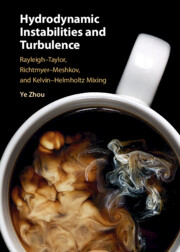 Hydrodynamic Instabilities and Turbulence
Hydrodynamic Instabilities and Turbulence Book contents
- Frontmatter
- Dedication
- Contents
- Preface
- Acknowledgments
- Part 1 Fundamentals
- Part 2 Hydrodynamics of Complex Flows
- Part 3 From the Microscopic to Cosmic Scales
- 18 High-energy-density physics
- 19 Inertial confinement fusion implosion
- 20 Laboratory applications
- 21 Astrophysical and space applications
- 22 Mixmodels
- 23 Numerical simulations of mixing
- 24 Does 2D turbulence resemble 3D turbulence?
- References
- Index
23 - Numerical simulations of mixing
from Part 3 - From the Microscopic to Cosmic Scales
- Frontmatter
- Dedication
- Contents
- Preface
- Acknowledgments
- Part 1 Fundamentals
- Part 2 Hydrodynamics of Complex Flows
- Part 3 From the Microscopic to Cosmic Scales
- 18 High-energy-density physics
- 19 Inertial confinement fusion implosion
- 20 Laboratory applications
- 21 Astrophysical and space applications
- 22 Mixmodels
- 23 Numerical simulations of mixing
- 24 Does 2D turbulence resemble 3D turbulence?
- References
- Index
Summary
By necessity, experimental studies have been the key to advancement in fluid dynamics for centuries. However, with the rapid increase of computational capabilities, numerical approaches have become an acceptable surrogate for experiments. Calculations must resolve the Navier–Stokes equations or approximate methods constructed from them. I will discuss the pros and cons of various types of approaches used, including direct numerical simulations, subgrid models, and implicit grid-discretization-based large-eddy simulation.
Keywords
- Type
- Chapter
- Information
- Hydrodynamic Instabilities and TurbulenceRayleigh–Taylor, Richtmyer–Meshkov, and Kelvin–Helmholtz Mixing, pp. 477 - 487Publisher: Cambridge University PressPrint publication year: 2024
